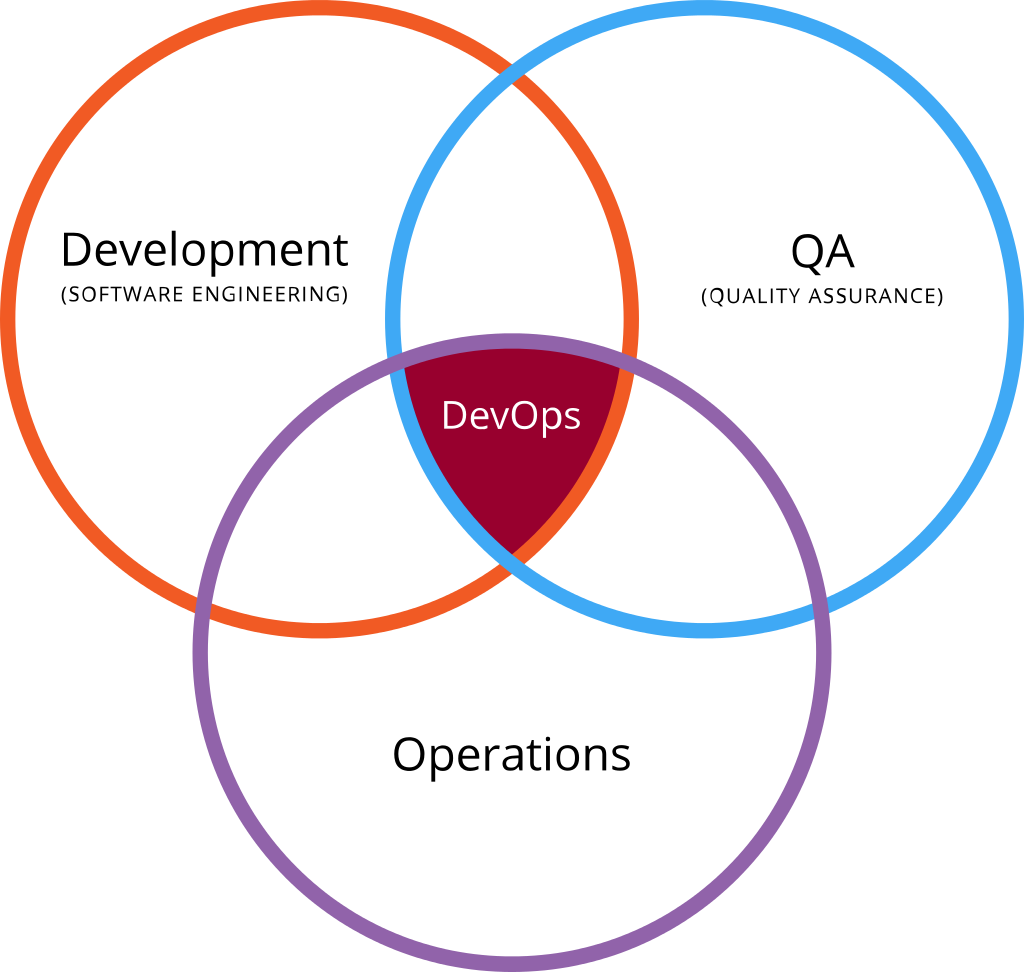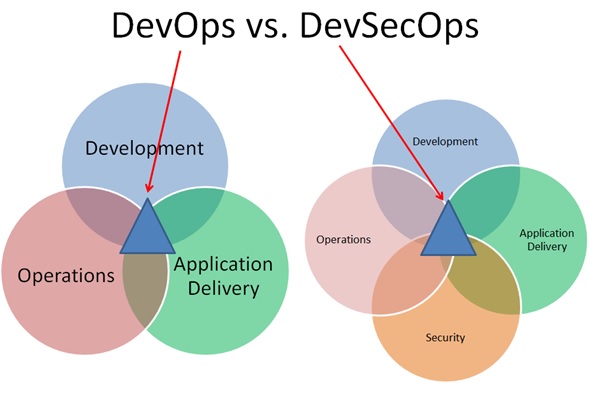Difference Between DevOps and DevSecOps
Software development and operations teams continue to strive to provide a consistent environment for global development. They bring the product from the hands of the developers to the hands of the customers. DevOps extends on that idea by breaking the barriers between the development and operations team, resulting in a more collaborative environment where silos are broken down, and development, QA and operations team all work together without any barriers. DevSecOps further extends the DevOps strategy by automating security and implementing security at scale. While both are fundamental building blocks of a software organization, the difference lies in their approach and how they work.

What is DevOps?
The word “DevOps” is a combination of two words, “development” and “operations”, but it represents a set of ideas, practices and tools that is bigger than these words. DevOps is a union of people, philosophies, and practices within an organization to increase its ability to deliver applications and services at a much faster pace and improved efficiency than with traditional development methods. DevOps is mainly a software development strategy that aims to bridge the gap between the development teams (Dev) and the IT operations team (Ops). It is the practice of developers and IT operations staff working and collaborating together in the entire software development lifecycle in order to produce better, reliable products. The idea is to break down the organizational silos that occur in the absence of a proper collaboration between the different teams within the organization and adopt a culture where teams can come together and work together in tandem.

What is DevSecOps?
The DevOps culture provides speed and quality benefits with continuous development and deployment methods, but it does not guarantee the security of the entire organization. Organizations are now more focused on security than ever. This is where DevSecOps come to the picture. DevSecOps further optimizes the DevOps strategy by automating security and implementing security at scale. DevSecOps extends the idea behind DevOps and breaks the silos between security teams and DevOps teams. It orchestrates the organizational workflow among the development, IT operations and security teams to provide an integrated, infrastructure for product development and deployment. It empowers developer teams to be accountable for not only performance in production but also security and compliance in production. The goal is to move security activities throughout the development lifecycle and provide built-in security practices in the continuous integration pipeline. DevSecOps stands for development, security and operations.
Difference between DevOps and DevSecOps
Terminology
– The word DevOps is an amalgamation of two words “development” and “operations” and represents a union of cultural philosophies, practices, and processes to increase an organization’s ability to deliver applications and services at a much faster pace and improved efficiency than with traditional development methods. DevSecOps is a combination of three words, development, security and operations, and as a phrase, it represents more of a divergence than we are comfortable with. DevSecOps is incorporating security practices within DevOps environments.
Methodology
– DevOps is a software development methodology that aims to bridge the gap between the development teams (Dev) and the IT operations team (Ops) by bringing people, processes and products together to deliver applications and services of high quality with greater efficiency. The developers and IT operations staff work and collaborate together in the entire software development lifecycle. DevSecOps is a methodology that is integrated into the DevOps process/pipeline and incorporates security into every step of the development process. DevSecOps optimizes the DevOps strategy by automating security and implementing security at scale.
Goal
– The goal of DevOps is to break down the organizational silos that occur in the absence of a proper collaboration between the different teams within the organization and adopt a culture where teams can come together and work together in tandem by developing and automating a continuous delivery pipeline. The goal of DevSecOps is to move security activities throughout the development lifecycle and provide built-in security practices in the continuous integration pipeline. DevSecOps team ensures application security in the overall development process.
Approach
– DevOps is based on a cultural philosophy that supports the agile movement in the context of a system-oriented approach. In some ways, DevOps is thought of as extending the principles of agile software development. DevOps is about improving productivity and adding efficiency to speed up the product launch lifecycle. DevSecOps, on the other hand, stresses on a security first and security always approach by validating all building blocks without slowing down the development lifecycle. The idea is to embed security in the architecture design from inception.
DevOps vs. DevSecOps: Comparison Chart

Summary
DevOps is based on a cultural philosophy that supports the agile movement in the context of a system-oriented approach. DevOps banks on effective collaboration by breaking the barriers between the development and operations team, and developing and automating a continuous delivery pipeline. But, now with organizations more focused on security than ever, security is the only way to win customers attention and DevSecOps stresses on that promise by ensuring application security in the overall development lifecycle. So, in a nutshell, DevOps is about improving productivity and adding efficiency to speed up the product launch lifecycle whereas DevSecOps is about automation of security and implementation of security at scale in order to slow down the whole process.
- Difference Between Caucus and Primary - June 18, 2024
- Difference Between PPO and POS - May 30, 2024
- Difference Between RFID and NFC - May 28, 2024
Search DifferenceBetween.net :
Leave a Response
References :
[0]Shrivastava, Saurabh and Neelanjali Srivastav. Solutions Architect's Handbook: Kick-start your solutions architect career by learning architecture design principles and strategies. Birmingham, United Kingdom: Packt Publishing, 2020. Print
[1]Hsu, Tony. Hands-On Security in DevOps: Ensure continuous security, deployment, and delivery with DevSecOps. Birmingham, United Kingdom: Packt Publishing, 2018. Print
[2]Pendyala, Vishnu. Tools and Techniques for Software Development in Large Organizations: Emerging Research and Opportunities: Emerging Research and Opportunities. Pennsylvania, United States: IGI Global, 2019. Print
[3]Image credit: https://commons.wikimedia.org/wiki/File:Devops.svg
[4]Image credit: https://commons.wikimedia.org/wiki/File:DevOps_vs_DevSecOps_Mginise.jpg
